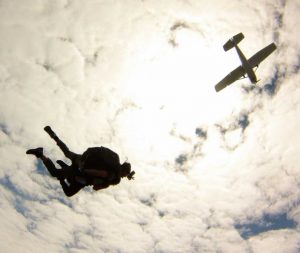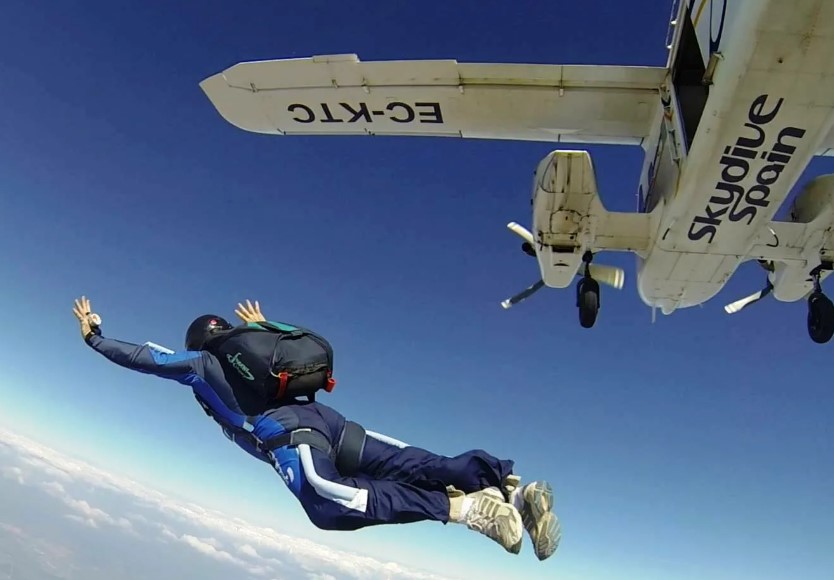Skydiving is an exhilarating activity that allows you to experience the thrill of freefall and the breathtaking beauty of the world from a whole new perspective. However, before you take the leap, it’s important to understand that there are safety considerations, and one of the key factors is weight.
Why Weight Limits Exist
Skydiving equipment is meticulously designed and tested to handle a specific weight range. This ensures the safe operation of the parachute during deployment and freefall. Exceeding the weight limit can lead to several issues:
- Deployment malfunction: The parachute might not open correctly or inflate fully if the weight exceeds its capacity.
- Steering difficulties: A heavier weight load can make it challenging for the skydiver or instructor to control the parachute’s descent.
- Increased stress on the equipment: The additional weight puts extra strain on the harness, lines, and canopy of the parachute, potentially leading to equipment failure.
- Comfort and safety: A tandem jump with a combined weight close to the limit can be uncomfortable for both the instructor and the student, impacting the overall safety and enjoyment of the experience.

Understanding the Weight Limits
There’s no single, universal weight limit for skydiving. It primarily depends on two factors:
-
Tandem vs. Solo Jumping: Tandem jumps involve a student strapped to an experienced instructor who controls the jump. Solo jumps are for experienced skydivers who have undergone rigorous training. Weight limits tend to be higher for solo jumps due to the increased skill and control of the jumper.
-
Combined Weight: For tandem jumps, the crucial factor is the total weight of the instructor and the student, along with the parachute system itself. Most tandem rigs have a maximum weight limit of around 500 pounds (227 kg), which includes roughly 60 pounds (27 kg) for the equipment.
Here’s a general guideline for tandem skydiving weight limits:
- Typical Range: Most skydiving centers in the US set their weight limit for tandem jumps between 225 lbs (102 kg) and 240 lbs (109 kg). This range can vary depending on the height of the student. Shorter individuals may have a slightly lower limit due to harness and fit considerations.
- Flexibility: Some dropzones might offer flexibility for weights exceeding the standard limit based on body composition and height-to-weight ratio.
- Body Mass Index (BMI): Skydiving centers may also consider BMI as an indicator of healthy weight distribution for safe jumping.
Finding the Right Dropzone
It’s crucial to choose a reputable dropzone that prioritizes safety and has clear communication about weight restrictions. Here’s what you can expect:
- Website Information: Most dropzones will have their weight limits clearly listed on their website.
- Contact and Consultation: If you’re close to the weight limit or have concerns, don’t hesitate to contact the dropzone directly. They can assess your situation and advise you on suitability.
- Focus on Safety: A responsible dropzone will prioritize your safety and not pressure you to jump if your weight falls outside their safe operating range.
Exceeding the Weight Limit
If you exceed the weight limit for a tandem jump, it doesn’t necessarily mean you can’t experience skydiving. Here are some possibilities:
- Solo Jumping (if qualified): If you have the necessary training and experience, solo jumping might be an option, but it requires significant commitment and preparation.
- Weight Loss Program: If you’re close to the limit, consider a healthy weight loss program to reach a safe jumping weight.
- Alternative Activities: There are many thrilling activities that don’t have weight restrictions, like indoor skydiving or scenic flights.
Remember, skydiving is an incredible experience, but safety should always be the top priority. By understanding weight limits and working with a reputable dropzone, you can ensure a safe and unforgettable jump.
